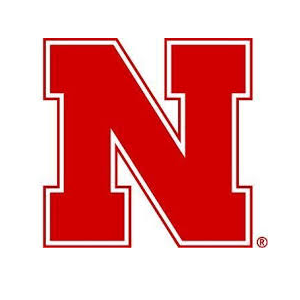Patent of the Day: Pattern Forming Puzzle and Method with Pieces Rotatable in Groups (Original Rubik's Cube)
On this day in 1972 Larry Nichols was granted the patent for Pattern Forming Puzzle and Method with Pieces Rotatable in Groups, better known today at the Rubik's Cube. U.S. Patent No. 3,655,201.
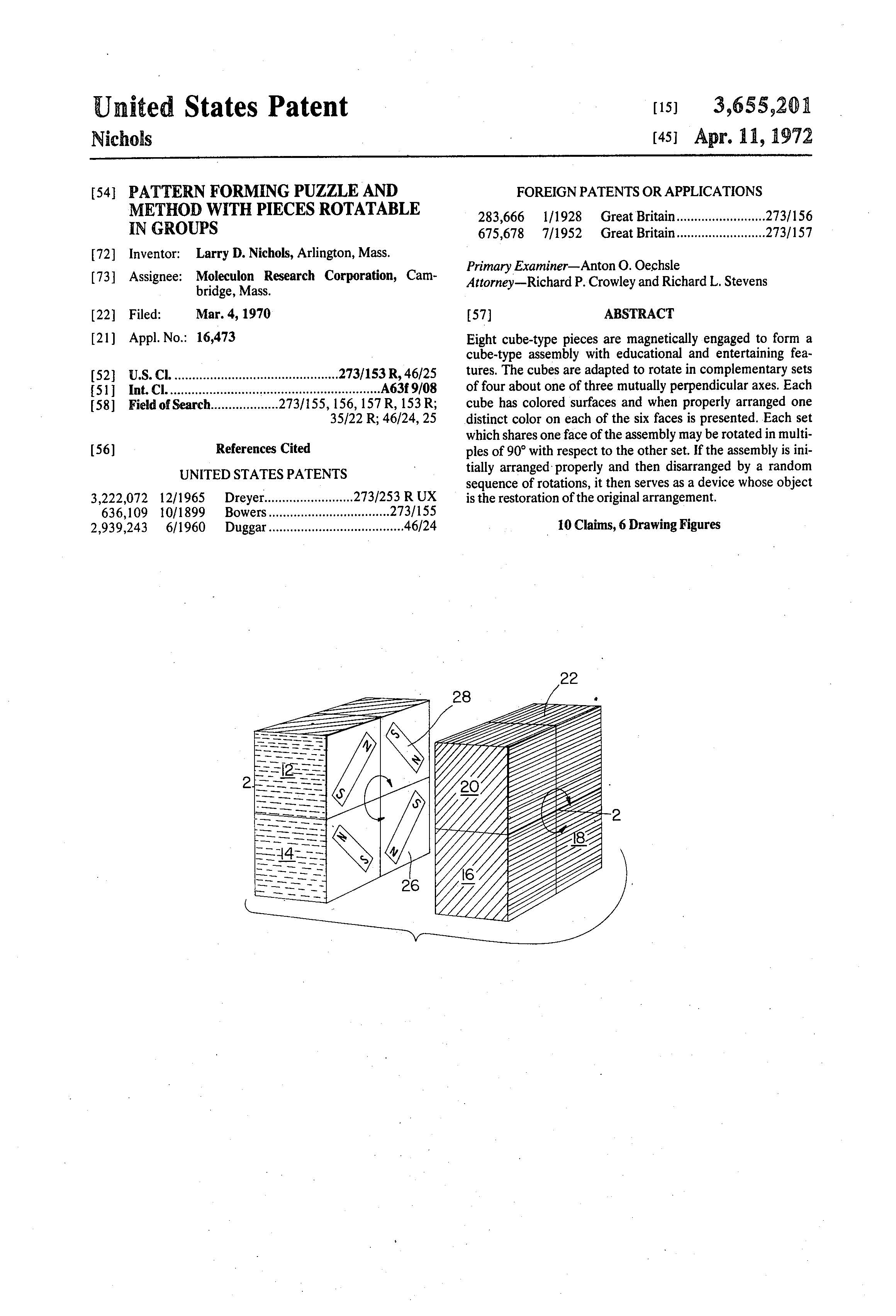
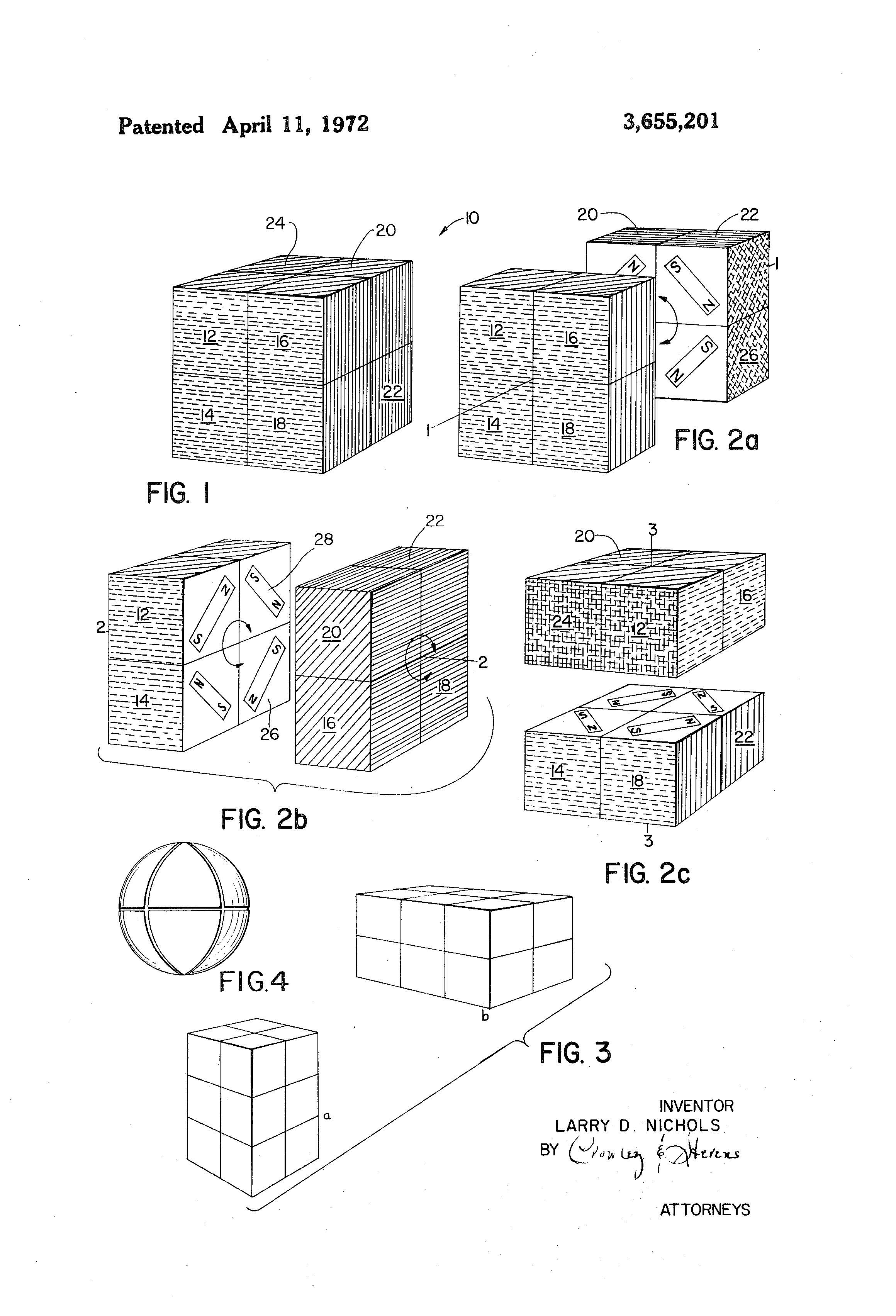
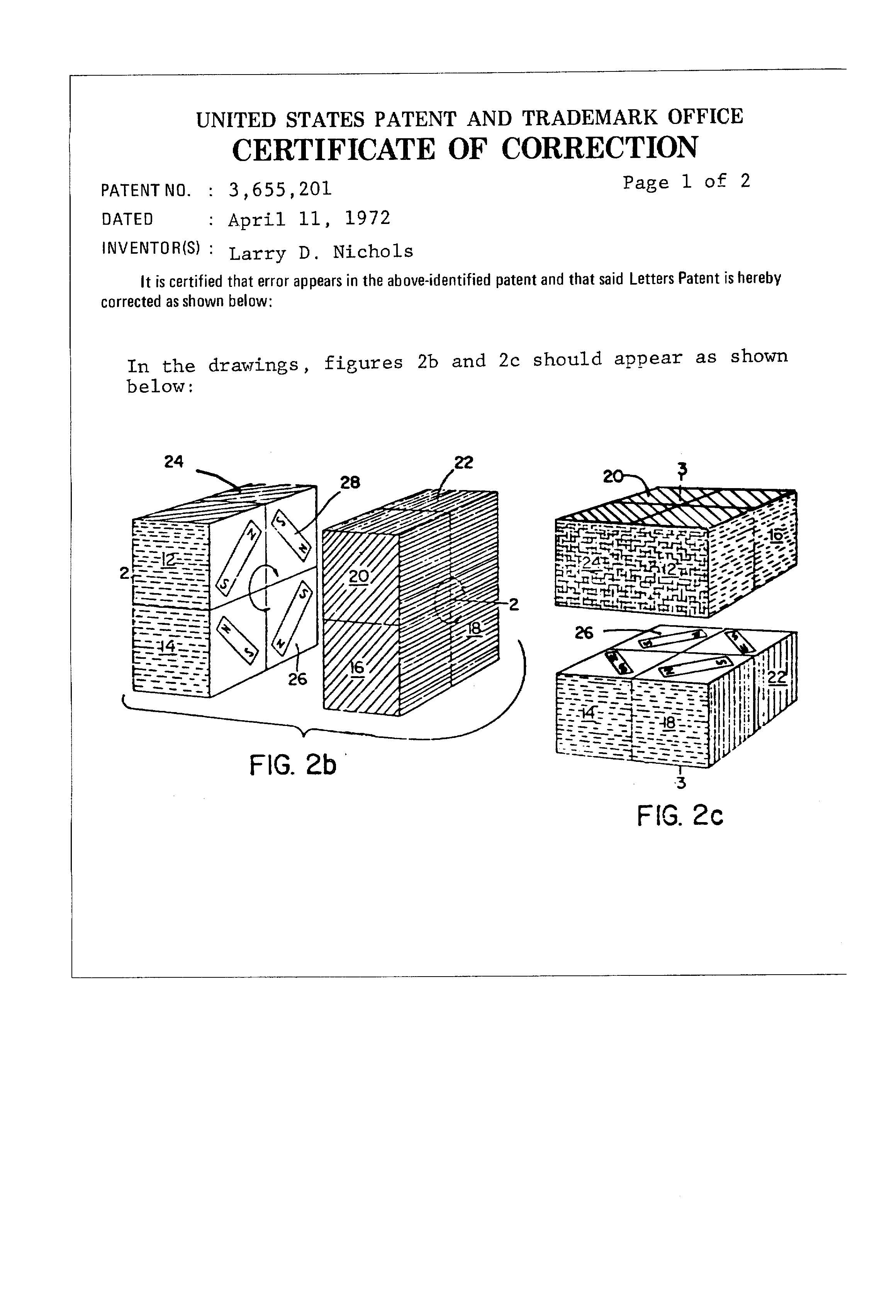
Patent of the Day: Apparatus for Consuming Smoke
On this day in 1902 the patent for Apparatus for Consuming Smoke was granted. U.S. Patent No. 697,069.
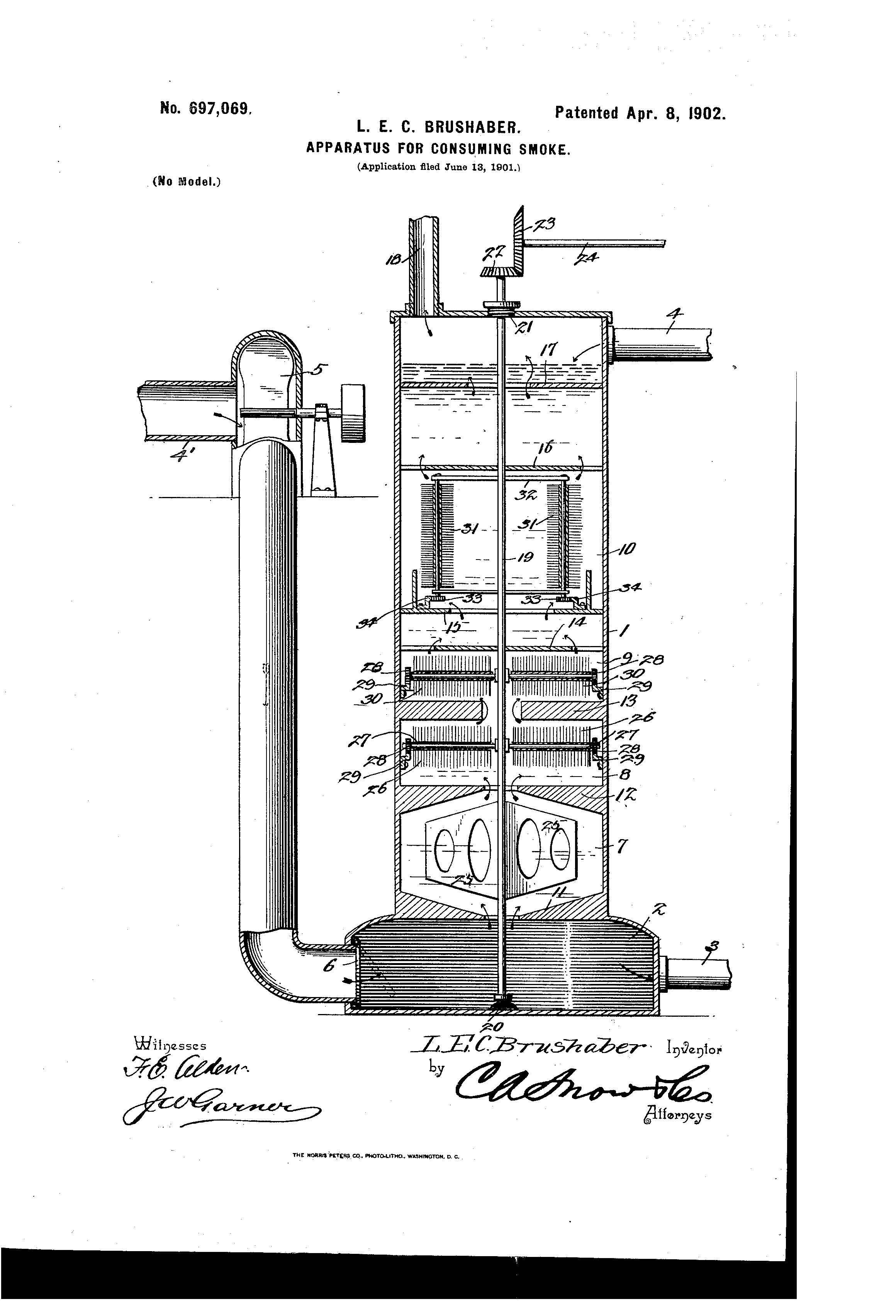
Patent of the Day: Hand Fertilizer Dropper
On this day in 1908 the patent for Hand Fertilizer Dropper was granted. U.S. Patent No. 883,796.
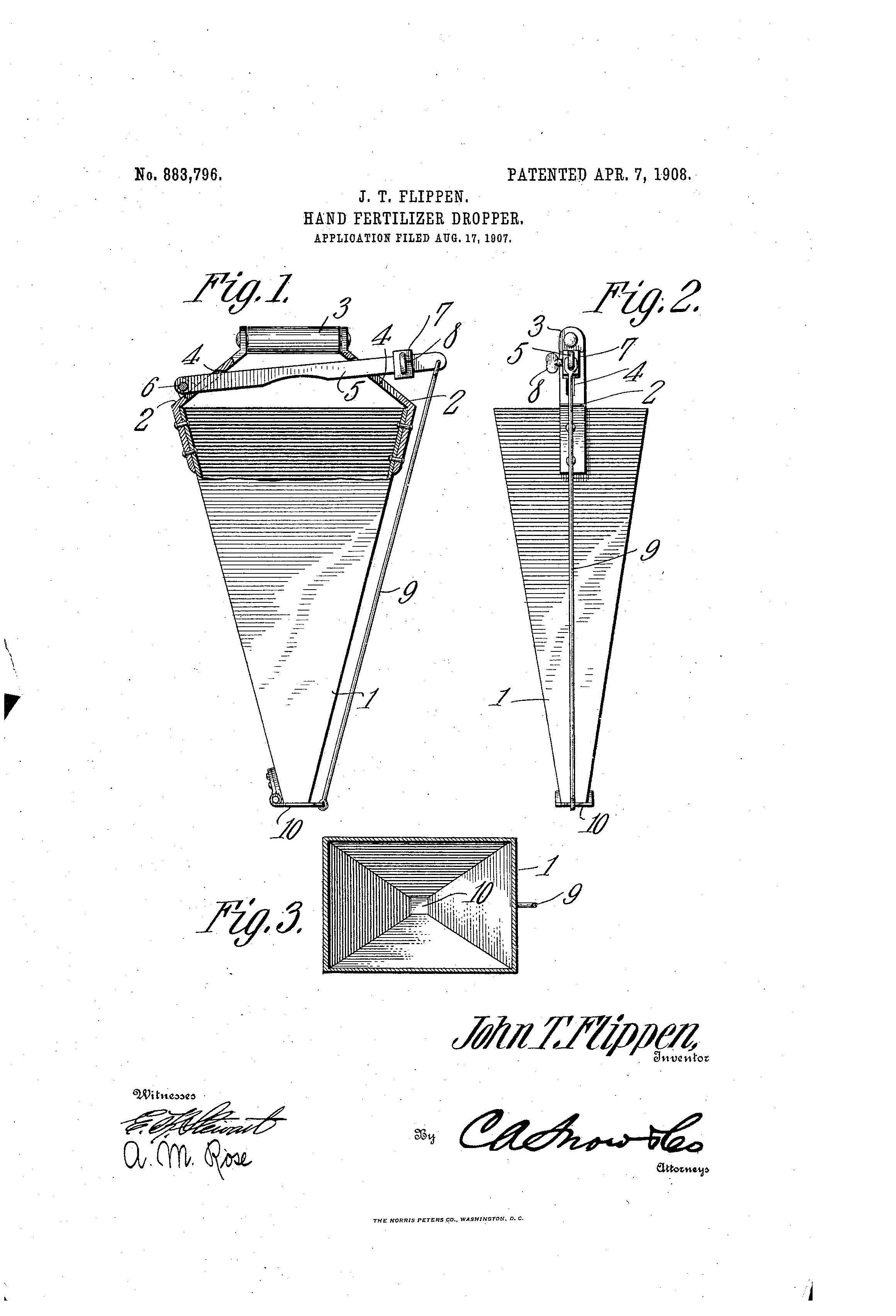
Patent of the Day: Bee Hive
On this day in 1842 the patent for Bee Hive was granted. U.S. Patent No. 2,539.
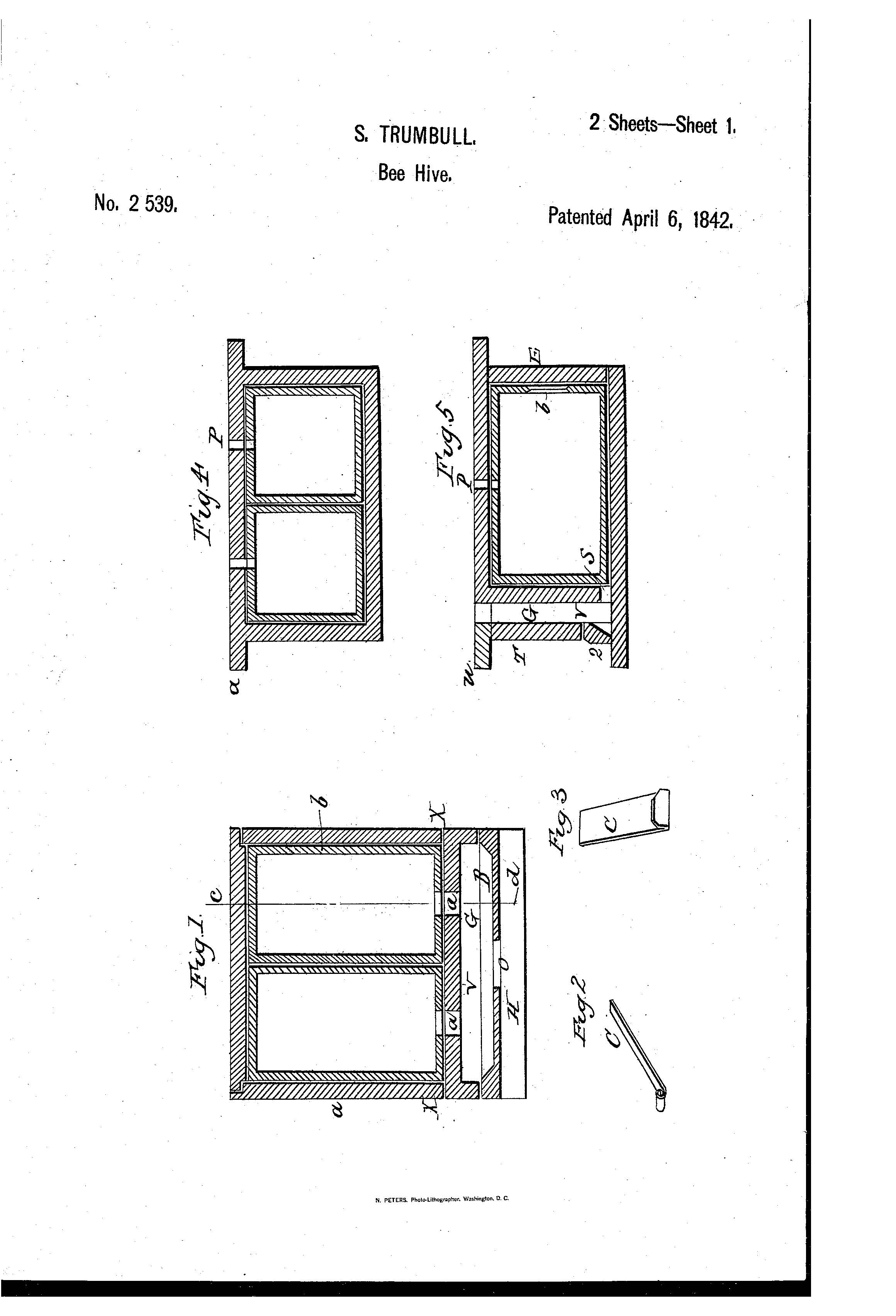
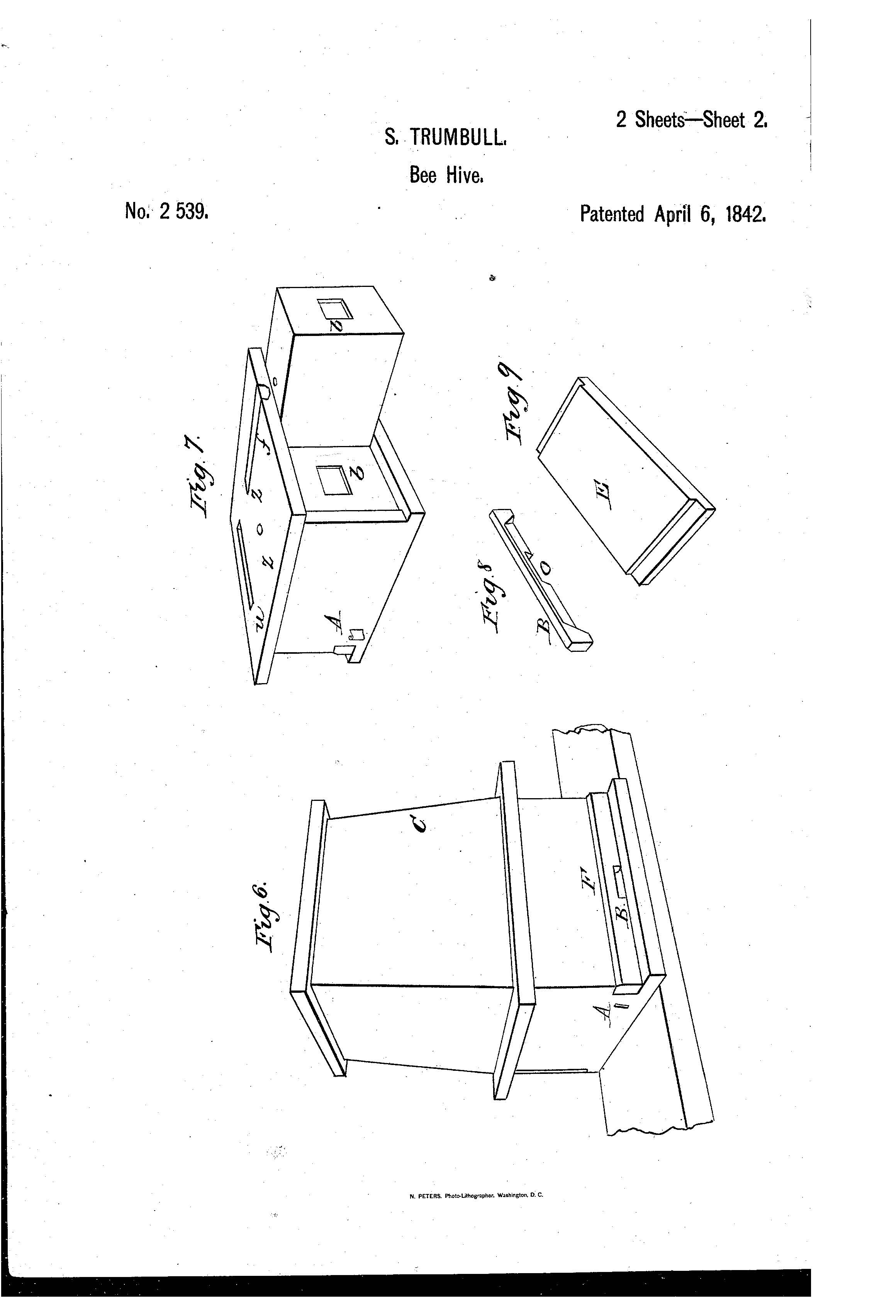
Patent of the Day: Stomach Pump
On this day in 1908 the patent for Stomach Pump was granted. U.S. Patent No. 883,583.
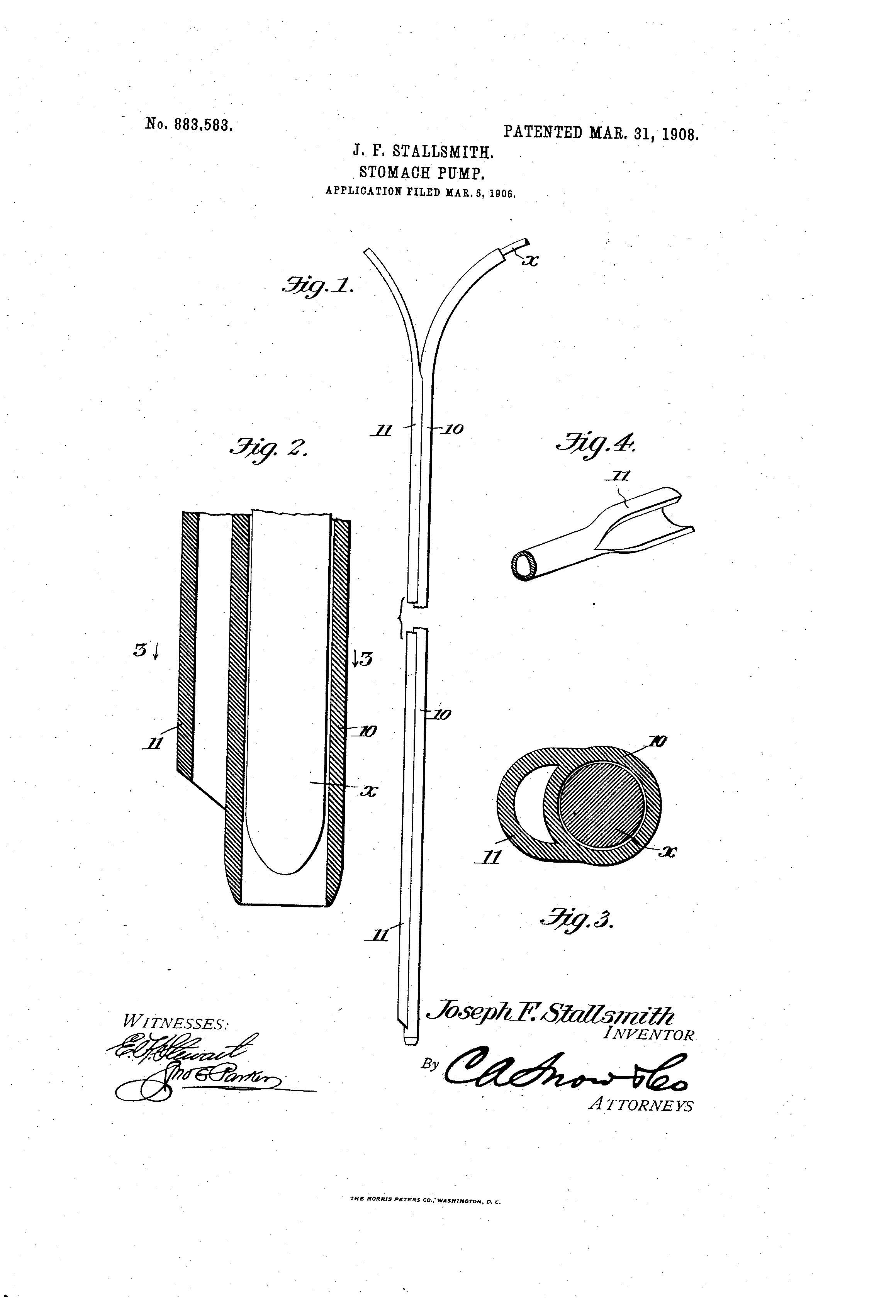
Companies Increasingly Trademark Hashtags
By: Jack Marshall - The Wall Street Journal
Companies are increasingly trying to “join the conversation” with consumers on social media services including Facebook and Twitter, but they’d rather their competitors didn’t join the conversation too.
In an attempt to protect their intellectual property on social media sites and across the wider Internet, companies are increasingly filing trademark applications for hashtags related to their products and brands.
According to research by Thomson Reuters CompuMark, 1,398 applications to trademark specific hashtags were filed globally during 2015. That number has been growing consistently since 2010, when just 7 companies applied to trademark hashtags.
The number of successful applications also appears to be rising. A total of 103 hashtag trademarks were registered in 2014, Thomson Reuters CompuMark said.
As of 2015, the U.S. leads all countries with the most hashtag applications with 1,042, followed by Brazil with 321, France with 159 and the United Kingdom and Italy with 115.
Hashtags, which originated on Twitter, are typically words or phrases preceded by a hash or pound sign, and are now commonly used across the Internet to signal that posts or messages are related to specific issues or topics.
They’re increasingly being used by marketers as well, often to try to link posts to news or cultural events, or simply in attempts to get people tweeting about specific products, promotions or campaigns.
The problem for marketers, however, is that hashtags can be used by anyone, including by competing companies. A hashtag trademark could help offer some protection.
“You often see companies register their tag lines or slogans so they can protect those trademarks and prevent competitors from using them. A hashtag trademark is the same basic concept,” said Aaron P. Rubin, a partner at law firm Morrison & Foerster LLP.
As a result, major U.S. companies have opted to trademark hashtags in recent years, according to Thomson Reuters CompuMark’s research.
In 2013, for example, Reckitt Benckiser registered the #blamemucus hashtag with the United States Patent and Trademark Office, and used it to spread the word online about its Mucinex brand of cold and flu medicines. The company’s Twitter account frequently prompted people to use the hashtag when posting about and discussing their colds on the social network.
More recent examples include the #sayitwithpepsi hashtag, which was registered in Europe by PepsiCo last year, and #everydaymadewell, which was registered in the U.S. by clothing retailer Madewell.
Patent of the Day: Sausage Stuffer
On this day in 1859 the patent for Sausage Stuffer was granted. U.S. Patent No. 23,416.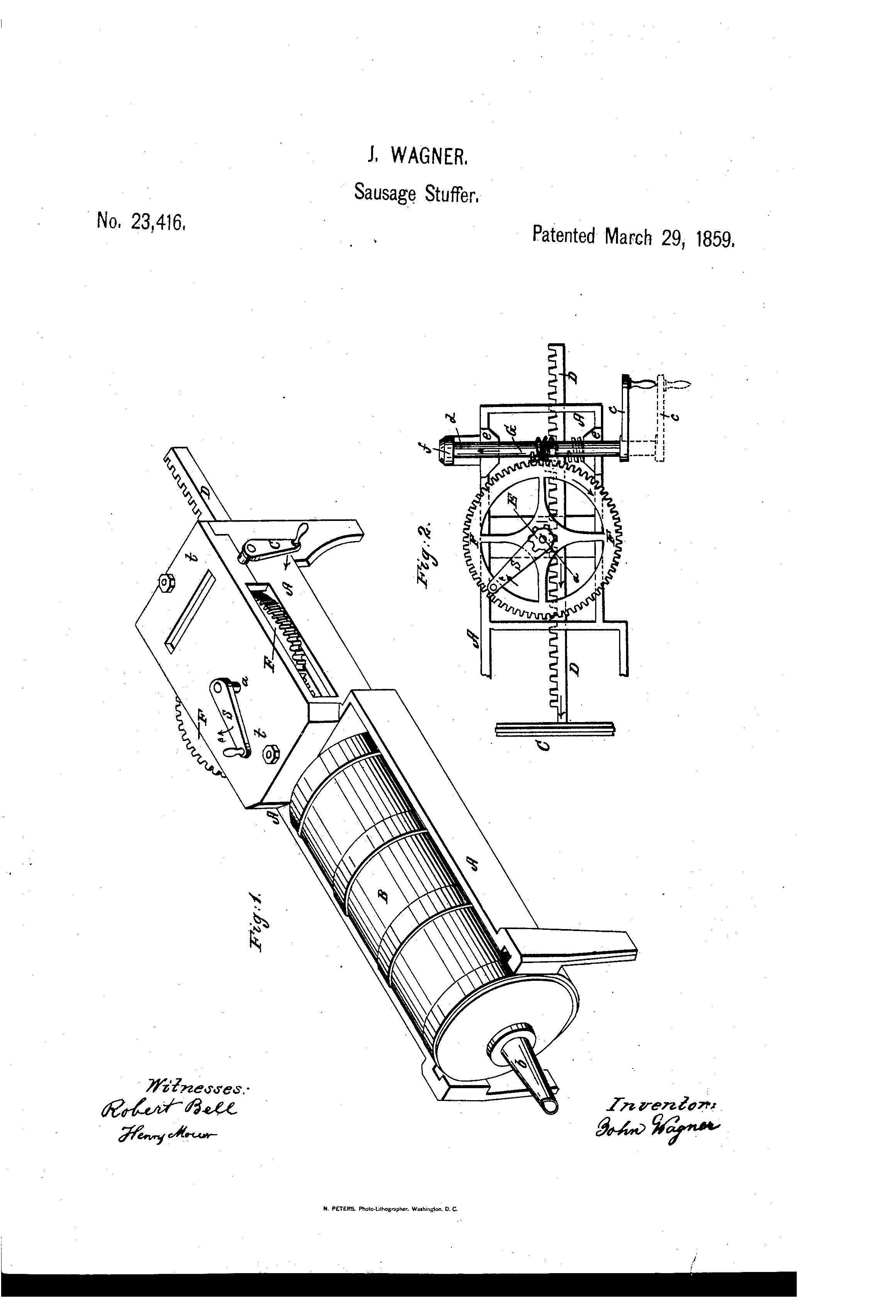
Patent of the Day: Hydraulic Air Compressor
On this day in 1905 the patent for Air Compressor was granted. U.S. Patent No. 785,889.
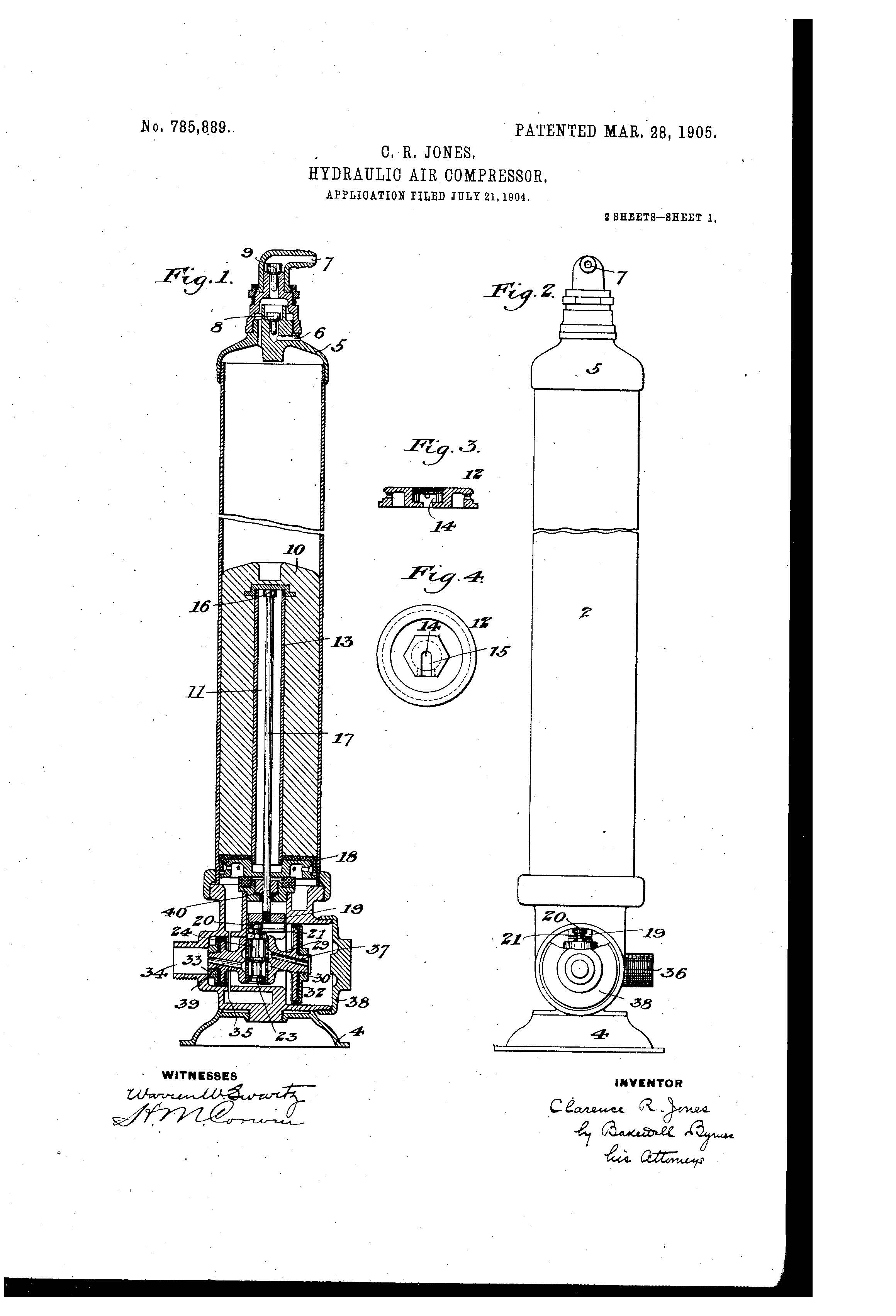
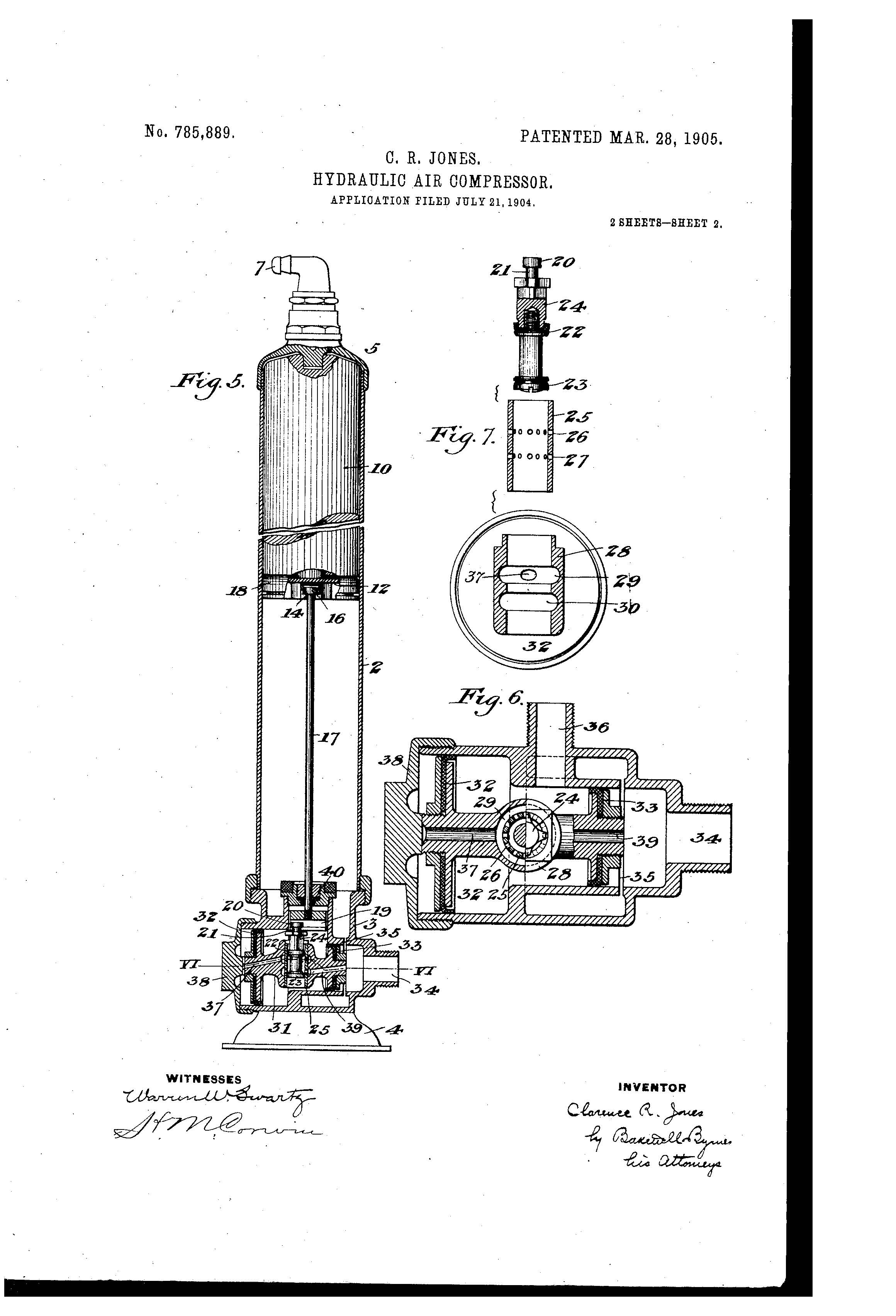
9 Iconic Inventors Who Changed the World
By: Carolyn Sun - Entrepreneur
For an invention to leave a significant mark on history, it’s impact needs to be major. Understandably, it doesn’t happen very often. Which means when it does happen, we should celebrate it.
With that in mind, we wanted to highlight inventors who more than cleared the bar. The following nine individuals all created something powerful enough to change our habits, the way we think and, ultimately, the way we live.
1. Steve Jobs
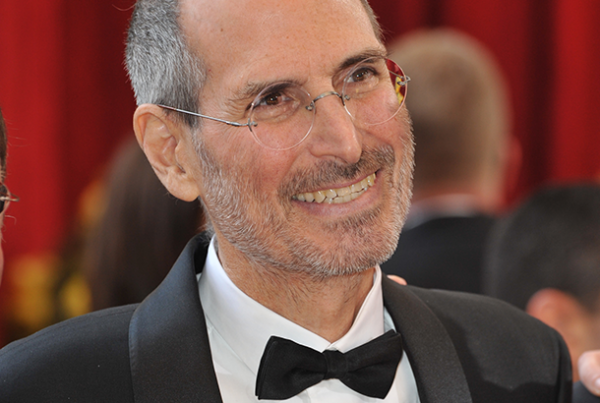
Steve Jobs’ narrative is one of big failures and even greater redemptions. The Reed-college dropout started Apple Computer in his parents’ garage in Palo Alto, Calif. with engineering buddy Steve Wozniak in 1976. Their mission? Build a personal, portable computer that everyone could use. They achieved that with their second model of personal computer, the Apple IIc.
In 1980, Apple went public with a market value of $1.2 billion by the end of its first day of trading. However within five years, following a series of disappointing products and sales, Jobs was forced out of the company. Undeterred, he started NeXT, a computer and software company. Around this time, he invested $5 million in Pixar, the animation arm of George Lucas’s film company. He continued to increase his investment, until he controlled the company. It proved a smart decision: Pixar went on to develop multiple smash hit franchises, including Toy Story, Finding Nemo and The Incredibles.
Job’s stock was looking up and continued to rise. In 1996, NeXT was purchased by Apple and the following year, Jobs was asked to return to the beleaguered Apple and acts as its interim CEO -- a position he held until shortly before his death in 2011.
During his tenure as chief executive, Jobs broadened the scope of Apple’s products, transforming the company to one of the most successful companies in the world valued at upwards of $300 billion, thanks to the success of the iPhone and iPad.
2. Mark Zuckerberg
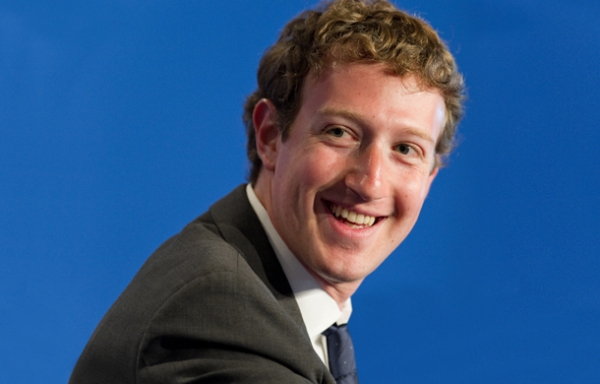
At age 31, Mark Zuckerberg is one of the world’s youngest billionaires worth more than $46 billion. As the co-founder and CEO of Facebook, he also helms the world’s most popular and influential social media site that, as of January, had more than 1.5 billion active monthly users.
Zuckerberg developed the social networking site with friends while an undergrad at Harvard, ultimately dropping out his sophomore year to focus on Facebook full time. He opened an office in Palo Alto, Calif., where he raised $12.7 million in venture capital.
Since then, Zuckerberg has aggressively grown the company, which went public in 2012. Not only has he developed a robust advertising and sales arm, but he has rigorously built out Facebook’s capabilities and user bandwidth by enabling native video services and live streaming. Zuckerberg also spearheaded a number of acquisitions, including Instagram, Oculus VR and a Snapchat-like app called Masquerade.
The young mogul, who recently became a father, has also grown into an outspoken philanthropist. Through the Chan Zuckerberg Initiative, Zuckerberg and his wife have donated hundreds of millions of dollars toward health and education initiatives.
3. Elon Musk
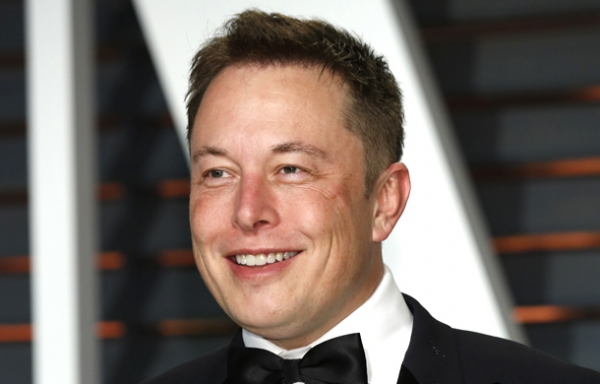
Elon Musk has been referred to as “the Henry Ford of rockets.” The South African-born tech entrepreneur is mythologized for a lot of things -- among them, serving as the inspiration for tech industrialist Tony Stark’s character in the Iron Man film franchise -- but he’s probably best known for his attempt to conquer private space travel with SpaceX. Musk founded the aerospace company in 2002 in order “to revolutionize space technology, with the ultimate goal of enabling people to live on other planets,” according to the company website.
SpaceX is planning to launch its newest rocket -- named the Falcon Heavy, the most powerful operational rocket in the world with reusable launchers -- in November 2016.
Most people would be too busy running SpaceX to focus on other projects. But Musk isn’t your typical dude. In addition to SpaceX, the entrepreneur serves as chief executive of Tesla Motor Co., an electric car company, is chairman and co-founder of SolarCity and is working to build a high-speed “Hyperloop” transportation system, which -- in theory -- could revolutionize travel by cutting commute time from Los Angeles to San Francisco to 30 minutes.
4. Anne Wojcicki
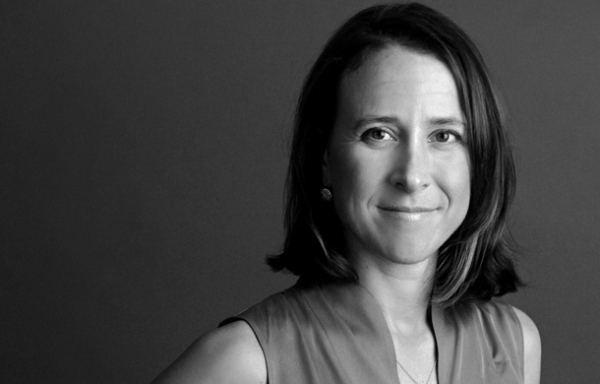
Anne Wojcicki is the co-founder and CEO of 23andMe, which sells direct-to-consumer genetic testing kits that are easy to use -- it simply requires that you mail in a saliva sample -- and relatively inexpensive, at $199 a test.
The company’s genome kit, which was named "Invention of the Year" by Time magazine in 2008, tests for 36 recessive disorders, including sickle cell anemia and cystic fibrosis.
In 2013, the company ran into trouble when it was ordered by the FDA to stop selling its kits over questions about the reliability of the results. Instead of throwing in the towel, Wojcicki worked closely with the agency to prove that the tests were accurate and, in 2015, 23andMe launched an FDA-approved testing kit.
The company continues to innovate, recently raising $115 million (at a $1.1 billion valuation) to develop its drug-discovery arm.
5. Henry Ford
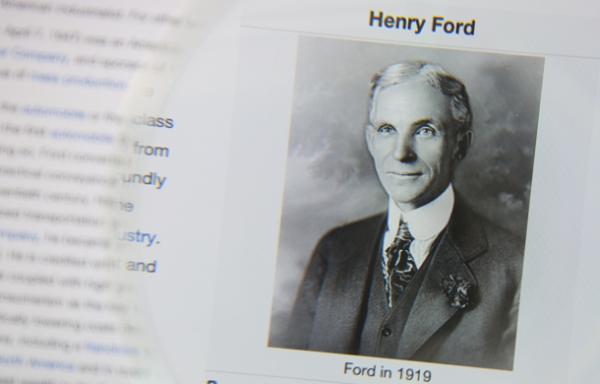
At the turn of the century, automobiles were regarded as toys for the very rich. Henry Ford was intent on changing that. At the age of 40, after two failed, previous attempts, the Michigan-born engineer took another shot at building a powerful, but affordable and reliable, mass-produced car.
The end result was the Ford Model T, which sold for approximately $850 in 1908 dollars. While the car quickly won over customers, Ford was unable to meet the growing demand thanks to his company’s limited production capacity. And so the automobile industrialist focused on innovating the assembly line process. Over the next decade, he made automobile manufacturing more efficient and less costly with modifications such as adding an automated conveyor belt and training each worker to perform a single task.
By 1919, the self-taught pioneer with an eighth-grade education was producing more than half the cars in the U.S. By lowering the cost to $350 an automobile, he made cars part of the fabric of middle class America.
6. & 7. Larry Page and Sergey Brin
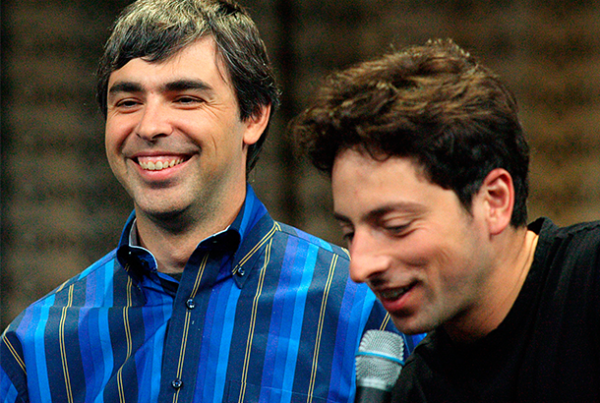
“Sergey and I are seriously in the business of starting new things," Google co-founder Larry Page said in a letter to the public announcing the creation of Google’s parent company, Alphabet, back in August 2015.
Alphabet’s two co-founders, Page and Sergey Brin, met as Ph.D. students at Stanford University in 1995. Shortly after they collaborated on Backrub, a search-engine company, while living in a friend’s garage in Menlo Park, Calif.
The tech duo eventually changed the name of their search engine from Backrub to “Google” (thank god) and revolutionized the search-engine industry by using a new algorithm that ranked a webpage’s based on its back links, i.e. links on other websites that refer back to a given webpage. Up until then, many existing search engines used human-curated results.
In 2004, Google went public, and since then, the company has diversified, rolling out products including Gmail, Google Maps, Google + and Google Glass. The company is also developing products in the self-driving car, robotics, life sciences and AI industries, among others.
With so many simultaneous projects, the founders created Alphabet, a parent company, in 2015 that serves as a holding entity to its many subsidiaries, including Google. Brin serves as Alphabet’s president and Page is its CEO.
8. Marie Curie
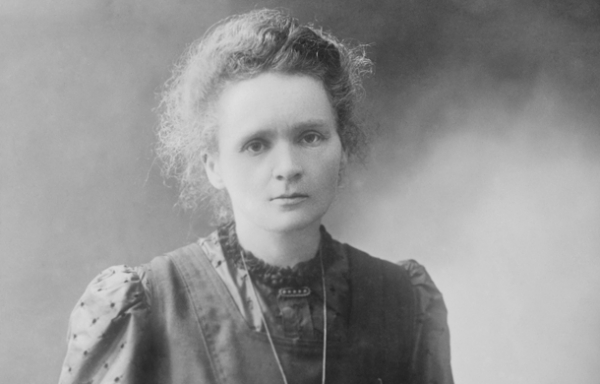
Physicist and chemist Marie Curie, who was born in Warsaw, Poland, in 1867, was a standout individual. That she was a woman living during a time when science was an industry almost exclusively reserved for men makes her accomplishments even more impressive. In the face of convention, Curie became the first female professor at Sorbonne University in Paris, where she taught physics.
In 1903, Curie was awarded the Nobel Prize in physics for her discovery of radioactivity. In 1911, she won a second Nobel Prize, this time in chemistry, for her discovery of two new elements: radium and polonium. Her discovery of radium lead to the development of using X-rays in medicine, and Curie was at the forefront for cancer research, directing the first studies that used radiation to treat tumors.
Tragically, it was her groundbreaking work that killed her. She died in 1934 due to aplastic anemia, which is caused by prolonged exposure to radiation.
Her contribution to society lives on, however. Curie founded two cancer research institutes, one in Paris and one in her birth-city of Warsaw, which remain critical biomedical research centers for cancer research today.
9. Louis B. Mayer
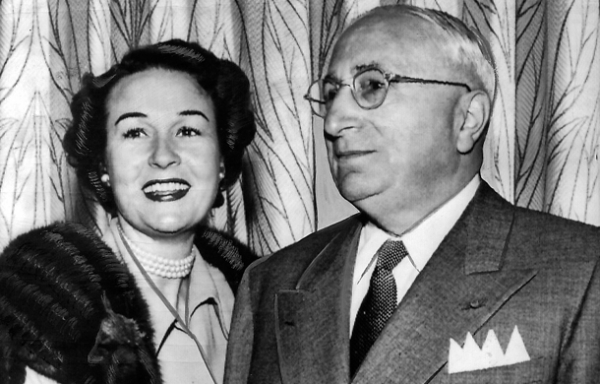
Metro Goldwyn Mayer (MGM) movie mogul Louis B. Mayer, born in Russia, was responsible for iconic American films such as Ben Hur, Singing in the Rain, Gone with the Wind and Wizard of Oz. Mayer left school at the age of 12 and stepped into the role of breadwinner at a young age, supporting his parents and four siblings by, among other things, collecting heavy scrap metal for resale during brutally cold Canadian winters in New Brunswick.
The ambitious Mayer eventually moved to Boston at the age of 19 to expand the family’s scrap metal business. Once there, he pounced on an opportunity to purchase a rundown burlesque hall, which he converted into a 600-seat movie theater. The theater was a huge success, which eventually allowed him to take over the entire New England movie theater market.
However, it wasn’t until 1914 that he hit gold. Mayer purchased the New England rights to D.W. Griffith’s Birth of a Nation for $50,000. The movie was a smash hit, making Mayer a cool $500,000. In 1918, he moved to Los Angeles and formed the Louis B. Mayer Pictures Corporation. Around this time, business magnate Marcus Loew and film producer Samuel Goldwyn merged companies to form Metro-Goldwyn film studios for which Mayer was asked to head. He agreed -- with the caveat that his name be added to the studio’s name.
Hence the birth of Metro Goldwyn Mayer, which he ran for nearly three decades. MGM had the distinction of being one of the few movie studios that not only used technicolor but also remained profitable during The Great Depression.
9 Reasons Your Start-Up Needs Patents
By James Cleary and Robert T.S. Latta
1. Patents Get Venture Capital.
Venture capitalists want to see patents. 67% of venture-backed startups report that patents were vital for them in securing investment.[1] In a 2010 study, only 40% of startups held patents, 80% of startups that received venture capital owned patents.[2]
2. Patents Can Help Stop The Theft Of Its Innovations.
Large incumbent companies, while not as agile as startups, have the resources to see an idea created by a startup and implement it in record time. For example, Amazon invented the “one-click” online purchase system and obtained a patent on it in 1999. Amazon accused Barnes & Noble of copying this idea and sued them for patent infringement, which resulted in a settlement.[3]
3. Patents Bring Prestige And Influence.
Patents can make a startup’s product or service more profitable. Consumers can perceive patented technology to be of higher quality than non-patent technology.
4. Patents Defend Against Attacks From Rivals And Form Partnerships.
When sued for patent infringement, a Startup can assert their own patents back. This can result in an early and cost effective settlement. Startups can also partner with others, licensing-in patents, or acquiring patents in their field, to prevent someone else asserting those patents against them.[4]
Patents can form the foundation of strategic partnership agreements and joint ventures between startups and other companies. According to a 2014 National Science-backed study, 29% of manufacturing and service firms used inventions obtained from external sources to develop their most important new products and services.[5] In 14% of cases the patents were licensed in from startups.
5. Patents Can Help Corner A Market By Blocking Others.
Patents can block others from making, selling or using technologies. The Google founders filed for their PageRank patent, Pat. No. 6,285,999, before it even had a domain name or a business plan. The founders formed Google and then exclusively licensed that patent from Stanford for shares in the company. Those shares were eventually worth $336 million.[6] Without that patent, Google could have seen competition from the likes of Yahoo and Microsoft before it managed to gain traction in the market.
6. Patents Can Help Generate Revenue Through Licensing.
When an invention is wanted by millions, it becomes impossible for a startup to meet the demand. A startup is often limited on the amount of the market it can reach. Having a patent facilitates licensing the technology to others, taking a portion of their profits. For example, Carles Puente invented a new mobile phone antenna that is much smaller than previous designs. Manufacturing and selling these antennas brought him $3.9 million in 2009. Licensing the technology to smartphone manufacturers brought him $111 million in 2012.[7]
7. Patents Increase The Chances Of Acquisition.
Google bought Nest, in part, for its acquired and licensed patents. Analysts believe that Google bought Nest for $3.2 billion because of Nest’s valuable intellectual property.[8]
8. Patents Drive IPO Valuations.
Facebook purchased former AOL patents for $550 million from Microsoft and 750 patents from IBM when preparing for its IPO.[9] This beefed up its patent defenses ahead so that investor concerns could be quashed.[10]
9. Patents Provide Greater Long-Term Success For Startups.
A 2015 study showed empirically that “patents strongly and positively predict the long-run performance of VC-backed IPOs.”[11] The study found that “VC-backed IPOs with patents substantially outperform other VC-backed IPOs. The same holds true even for non-VC-backed IPOs.”[12]
[1] See, Sichelman and Graham, Patenting by Entrepreneurs: An Empirical Study, 17 Mich. Telecom. Tech. L. Rev. 111 (2010)
[2] Id.
[3] Nick Wingfield, Amazon, Barnes & Noble.com Settle Long-Lasting Technology Patent Suit, The Wall Street Journal, March 7, 2002 (available at: http://www.wsj.com/articles/SB1015466420659042800).
[4] Mathew Panzarino, Nest Buys Protection: Licenses Patents from Intellectual Ventures To Fight Honeywell, Others, Tech Crunch, Sep. 11, 2013 (available at: http://techcrunch.com/2013/09/11/nest-buys-protection-licenses-patents-f...).
- See more at: http://www.natlawreview.com/article/9-reasons-your-start-needs-patents#sthash.7jVkRHpm.dpuf
Nebraska MRSEC Job Symposium
Our own Matt Poulsen will be discussing patent law and alternative careers for STEM graduates this Friday the 25th around 2:45pm. This symposium will take place in 136 Jorgensen Hall on the UNL Campus. Click here to learn more about this event.
Omaha Startup Week: OEN Happy Hour 3/25 Sponsored by Suiter Swantz
Come join us Friday the 25th from 4:30-6:30 for a Happy Hour Event at the Exchange Building Sponsored by Suiter Swantz. Hosting the event during Omaha Startup Week is Omaha Entrepreneur Network; during happy hour there will be a lot of focus and discussion on crowdfunding.
Click here to register.











